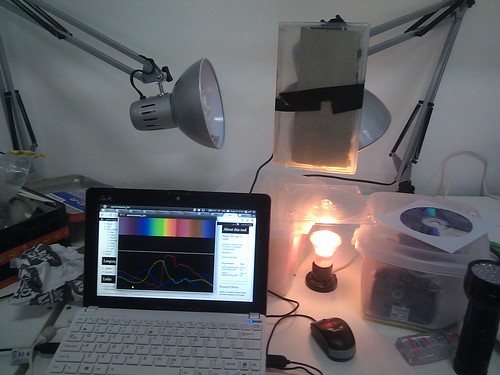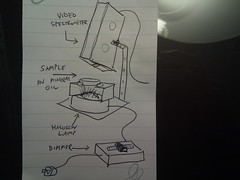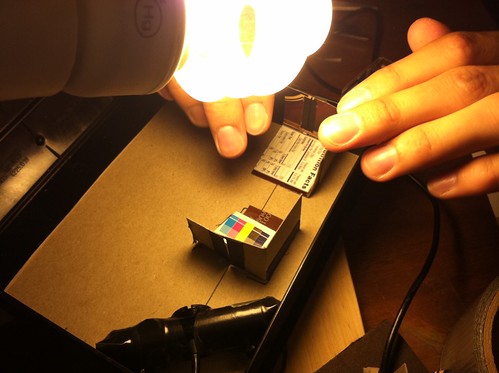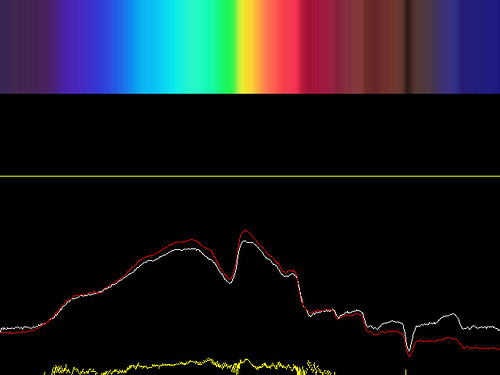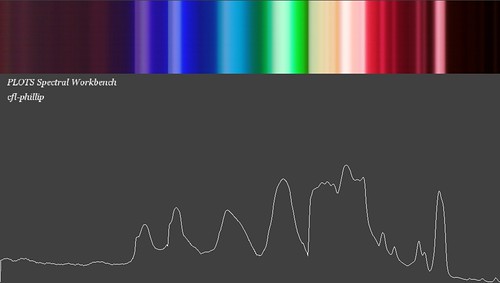Video spectrometer
This spectrometer is made with cardboard inserts inside an old VHS box, and uses a USB webcam. This allows the user to view the spectrum in real-time, rather than taking a photo and analyzing it later.
Please get in touch with jeff@publiclaboratory.org if you'd like to help work on this! Our early goals are to:
- Identify a contaminant in a sample, like Polycyclic Aromatic Hydrocarbons -- like naphthalene, anthracene and tetracene. Tetracene has absorption bands well into the visible range.
- Identify a plant species by its spectrum. (see this helpful paper by Zomer et al) Or perhaps a mineral, using the ASTER spectral library
- Try to identify something in a smokestack plume, like a refinery plume
How to build your own
Software: download the client software (Linux, may work in Mac or Windows with a little work) here: http://github.com/jywarren/spectral-workbench
Build instructions
You'll need:
- a black VHS box, like from Blockbuster
- a letter or A4-sized sheet of stiff black card paper
- a USB webcam, preferably over 640x480/VGA resolution, 780 HD is best.
- an old but relatively unscratched DVD-RW (a CD can work too)
- white glue and scissors/X-acto knife, some tape
more plans coming soon, but see this image for starters:
Using your spectrometer
You'll need to calibrate it first; the best way is probably to use a known spectrum from a compact fluorescent light bulb, and to compare it to your spectrum like this: http://publiclaboratory.org/notes/warren/7-28-2011/live-spectral-analysis-code-good-resolution
To do
- find a way to find a spectrum similar to a recorded sample spectrum, from a library of spectra like the ASTER library or the HITRAN library
- create a website to upload spectra to, -- even better, allow them to be sorted into "sets", and allow comments on each spectrum by other users. See the source code for where we've started work
Spectrum gallery
Some spectra captured with one of these devices. If you begin taking spectra, start uploading them to Flickr with the tag #diyspectrometer -- we'll soon have a place to automatically upload them, but this will work for now.
An example spectrum (one of our best yet!):
A Philips "warm" compact fluorescent bulb:
